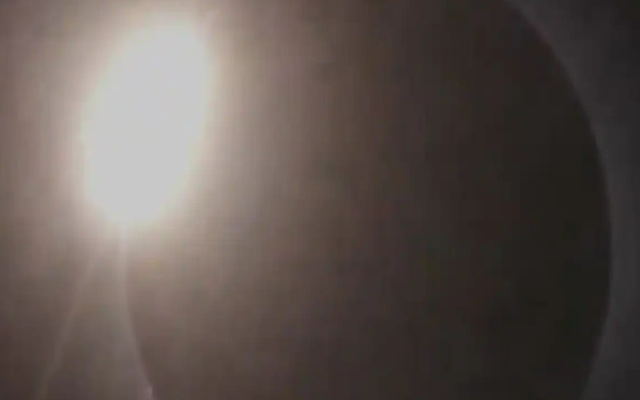New York: Millions of individuals in various regions spanning Mexico, Canada, and the United States beheld a rare spectacle on Monday: a total solar eclipse. This phenomenon, where the Moon completely obscures the Sun, traversed cities, sparking widespread excitement across the United States.
NASA facilitated the experience by broadcasting a mesmerizing live stream of the event on its official YouTube channel. Notably, parts of western and northern New York State witnessed a total eclipse for the first time in nearly a century.
The total solar #eclipse is now sweeping across Indianapolis.
This is the first time in more than 800 years that the city is experiencing this celestial event! pic.twitter.com/jZuKx4nUAb
— NASA (@NASA) April 8, 2024
The coastal town of Mazatlan in Mexico served as the primary viewing location in North America, while the eclipse commenced its journey in the United States from southern Texas near Eagle Pass, along the border with Mexico.
The 2024 total solar eclipse holds historical significance, as it will not grace the contiguous US until August 2044. Additionally, an annular eclipse, where the moon cannot fully obscure the sun, will not occur in this region until 2046.
CNN previously reported that the eclipse’s path began on Mexico’s Pacific coast at 11:07 am local time (2:07 pm ET) and concluded on the Atlantic coast of Newfoundland at 5:16 pm local time (3:46 pm ET).
Prioritizing safety, NASA underscored the importance of protective measures during eclipse viewing. The agency warned against direct sun exposure without specialized eye protection, emphasizing the risk of severe eye injury.
— NASA (@NASA) April 8, 2024
Changes in weather patterns during the eclipse are a notable phenomenon, though their effects are limited. As the Moon casts a shadow on Earth’s surface, temperatures can drop by approximately 10 degrees Fahrenheit within the path of totality, accompanied by shifts in humidity, wind speed, and cloud coverage.
Furthermore, eclipses offer valuable insights into solar phenomena. Scientists leverage these events to study solar material flow and its impact on Earth’s ionosphere, which affects technologies like GPS and long-distance radio communications reliant on the ionosphere.
Follow, follow the Sun / And which way the wind blows / When this day is done 🎶
Today, April 8, 2024, the last total solar #eclipse until 2045 crossed North America. pic.twitter.com/YH618LeK1j
— NASA (@NASA) April 8, 2024
Read More :

















